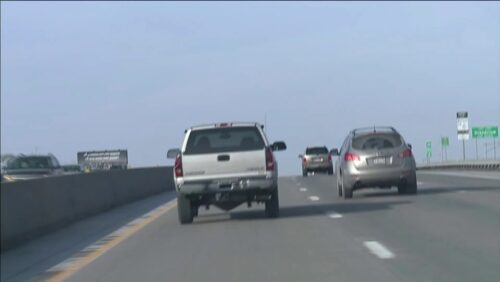9.25.24 – TOPEKA (KSNT)

Getting stuck behind a driver refusing to leave the left lane on the highway can be a pain. State troopers say this type of activity can also be illegal and dangerous.
27 News reached out to the Kansas Highway Patrol (KHP) to learn what the proper etiquette is for traveling along a two-lane highway and making use of the ‘passing lane/fast lane’ in Kansas. KHP spokeswoman April McCollum responded to 27 News with a written statement citing parts of current state law, explaining how drivers are supposed to use the right and left lanes on the highway.
The KHP has the power to cite drivers who linger in the left lane on a highway with at least two lanes of travel as of July 2009 under the Kansas “Left Lane Law.” This can amount to a $75 fine, not including court costs.
“Use the left lane as it was intended, for passing. It’s Kansas Law.”Kansas Turnpike Authority social media statement 8/30/2024
This rule, as written in K.S.A. 8-1522, applies to highways outside of city limits. Driving in the left lane is forbidden under this law with the following exceptions:
- Overtaking and passing another vehicle.
- Preparing to make a proper left turn.
- When directed by official traffic-control devices.
- When otherwise required by other provisions of law.
“Like so many other traffic laws, if driver’s do not abide by this statute, it can have an impact on travel for all motorists,” McCollum said. “It can lead to crashes and prevent emergency vehicles responding to those in critical need. Driving in the right lane can also give drivers more reaction time to motorists should a driver going the opposite direction of travel lose control of their vehicle and cross the roadway into oncoming traffic.”
McCollum said one of the other exceptions for using the left lane relates to emergency workers on the side of the highway. This includes first responders like KHP officers that have their lights on and who have pulled over a vehicle or who are responding to a crash.
“If the stationary authorized emergency vehicle is located on the right shoulder, the driver shall proceed with due caution and, if possible and with due regard, to a lane that is not adjacent to that of the stationary authorized emergency vehicle,” McCollum said. “If the driver is unable to change lanes or if it is unsafe to do so, the driver shall proceed with caution and reduce their speed.”
